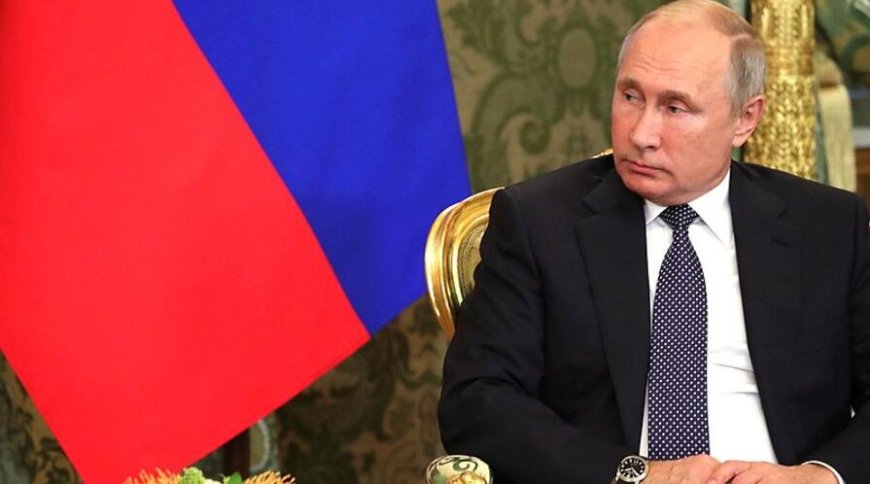Putin’s Next Move in Ukraine: The Ripple Effect Across Europe and NATO’s Fragile Unity
With Russia escalating operations in Ukraine, Europe braces for energy, security, and military shifts. NATO’s response may redefine 21st-century geopolitics.

As the war in Ukraine enters its fourth year, the geopolitical stakes have never been higher. Russian President Vladimir Putin, emboldened by both strategic gains and the West's wavering unity, appears poised to make his most consequential decision yet—one that could reshape Europe’s security architecture and test NATO’s resolve like never before.
A Calculated Escalation or a Strategic Pause?
According to a recent Council on Foreign Relations report, Russian forces are intensifying pressure in Ukraine’s Kharkiv and Donetsk regions. Despite mounting international sanctions and arms supplies to Kyiv, Moscow continues to leverage its vast reserves and industrial capacity, hinting at a long war of attrition.
Military analysts from Institute for the Study of War suggest that Putin may be considering a two-pronged strategy:
-
Deepening offensives in Eastern Ukraine, aiming to cut off logistics lines and exhaust Ukrainian resistance;
-
Sowing political instability in the West, exploiting divisions within the European Union and NATO over continued support for Ukraine.
This dual-track approach could buy Russia time and leverage ahead of any future peace negotiations—on its own terms.
Europe: Facing a New Era of Insecurity
For Europe, Putin’s next move is not just about Ukraine. It’s about testing the very limits of Western unity. The war has already caused ripple effects across the continent:
-
Energy Recalibration: Following Russia's weaponization of natural gas exports, EU nations have accelerated their energy diversification strategies. According to the International Energy Agency (IEA), the EU cut Russian gas imports by over 55% between 2022 and 2024. However, energy costs remain volatile, and winter 2025 could trigger fresh unrest in nations like Germany and France.
-
Inflation & Migration Pressures: The war has contributed to ongoing inflation and created an influx of over 7 million Ukrainian refugees across the EU. Public support for hosting refugees remains high, but the strain on social services is beginning to show—particularly in Poland and the Baltics.
-
Defense Spending Surge: As tensions escalate, NATO allies have ramped up military budgets. Germany, for the first time since the Cold War, crossed the 2% GDP defense spending threshold, signaling a profound shift in policy. More details are available from Stockholm International Peace Research Institute (SIPRI).
NATO: United Front or Fractured Alliance?
At face value, NATO seems more united than ever. The addition of Finland and Sweden has extended NATO’s border with Russia, and joint exercises have increased dramatically. Yet beneath the surface, fault lines remain.
Internal Political Tensions
-
U.S. Political Shifts: With the 2025 U.S. presidential race heating up, some candidates advocate for reduced military commitments abroad, potentially weakening NATO's deterrence posture.
-
Turkey and Hungary: These two NATO members continue to complicate consensus-building, especially on issues related to sanctions and military deployments.
As reported by Carnegie Europe, “The alliance faces a paradox: militarily reinvigorated but politically fragile.”
Risk of Article 5 Invocation
With recent Russian drone activity spilling into NATO-member airspace in Romania and Poland, many are wondering: What if a direct NATO-Russia clash becomes unavoidable?
NATO’s Article 5—its mutual defense clause—has never been more relevant, yet more feared. A miscalculation or false-flag operation could pull the alliance into open conflict with Russia, risking a broader European war.
Ukraine: A Pawn or a Permanent Ally?
Kyiv continues to plead for more advanced weaponry and NATO membership guarantees. But hesitation persists. NATO leaders, including U.S. and German officials, remain cautious about offering full membership while an active war is underway.
Still, Ukraine has achieved significant integration with Western defense structures and technology. According to the Atlantic Council, "Ukraine is functionally a NATO member in everything but name."
This limbo status keeps Ukraine dependent yet unprotected, a strategic vulnerability that Putin may exploit.
What Comes Next?
Three possible scenarios are being debated in diplomatic circles:
-
Limited Offensive, Political Gamble: Putin makes localized gains and uses them as leverage to demand peace talks, hoping the West fatigues.
-
Full-Scale Escalation: Russia launches a broader offensive, perhaps aiming for Odessa or Kyiv again, forcing NATO into a military dilemma.
-
Hybrid Pressure Campaign: Continued cyberattacks, election interference, and energy blackmail to destabilize Western governments.
Each path carries risks—not just for Ukraine but for the stability of the entire continent.
Final Thoughts
Putin’s next move in Ukraine is not just a battlefield decision—it’s a geopolitical calculation. Europe, caught between war fatigue and existential threat, must decide whether to double down or diverge. For NATO, the choice is starker: uphold the post-WWII order or risk losing credibility on the global stage.
The world is watching, and the clock is ticking.




















































